THC 9 - 13.5%
CBD 0.16 - 1.17%
Effect Euphoric
Flavor Sage
19 - 21.5%
0.12 - 0.28%
0.18 - 0.64%
Citrus, Sweet
Uplifted
The lineage of Purple Tangie remains blurry, not to say mysterious. It is a result of crossing between the Tangie and an unknown representative of a Purple family. The level of THC in cannabis ranges from 20 up to 22% which makes it more suitable for experienced users only. Tiny nugs are covered with red pistils and snow-white trichomes.
The high starts from a distinct energy boost that leads to increased productivity. That makes Purple Tangie weed strain a perfect choice for those who need to concentrate and work on a project that requires motivation and creativity. The weed also stimulates a desire for social interaction which makes it a good option for a smoke in a circle of friends.
The high is followed by giggles that guarantee an increased mood and un unwind after a workweek. The energy-boosting effect slowly shades into relaxation without causing too much sleepiness and fatigue.
That's why users who deal with anxiety and chronic pain find it beneficial to smoke Purple Tangie strain in the morning to start the day from the right foot. Doctors often prescribe this strain to those patients undergoing muscle spasms, general pain, depression, and anxiety. It can also become an option for those who feel overall fatigue and lack of motivation.
Typical effects:
The strain isn't easy to grow in terms of home cultivation as it prefers a Middetereinian climate. It also requires a topping to manage the growth. Though outdoor cultivation is preferable, the cannabis can also be grown indoors, if all the specific temperature and light requirements are properly met. The flowering period ranges from 10 up to 12 weeks.
| THC | Tetrahydrocannabinol, or THC, is a major cannabis chemical compound. It is a psychoactive element that stimulates dopamine release and induces euphoria or happiness. THC-rich strains may be helpful with such conditions as lack of appetite, chronic pains , etc. It is considered to be the primary active marijuana component. | 19 - 21.5% |
| CBD | Cannabidiol, or CBD, is a major compound in cannabis, which is non-psychoactive. It is also proved to counteract the side effects of the second major component THC. CBD is widely used for medicinal purposes in rubs, oils and so on. It is helpful in muscle pain cases, may treat arthritis and migraines. Even Greeks used it against pain, while Queen Victoria applied it to get rid of menstrual cramps. | 0.12 - 0.28% |
| CBC | Cannabichromene, or CBC, is a minor cannabinoid, meaning that its quantity in cannabis is quite little. Though it has the same origin as CBD and THC, it is different in functions. Without any psychoactive effects, it is an efficient cannabis compound in combating acne and depression. CBC produces analgesic, antibacterial and anti-inflammatory effects. | 0.12 - 0.38% |
| CBG | Cannabigerol, or CBG, is one of the minor cannabis compounds in adult plants. On the other hand, young ones contain a lot of this antibacterial and anti-inflammatory component. During the growth, CBG is converted into different cannabinoids, mostly THC and CBD. The compound itself increases appetite and decreases eye pressure. | 0.18 - 0.64% |
| CBN | Cannabinol, or CBN, is a trace element in cannabis that is considered to be mildly psychoactive. It appears from oxidation THC, exposed to light and heat. CBN is mostly contained in old cannabis and in traditional hashish. It is effective against insomnia, bacterial infections and appetite loss. | 0.28 - 0.22% |
| THCV | Tetrahydrocannabivarin, or THC-V, is a compound contained in cannabis in trace amounts. Even though it is close to THC molecularly, it is different in effects. This compound may be psychoactive only in large amounts. THC-V reduces blood sugar, controls appetite, stimulates bone growth, etc. African Sativa strains are the richest in THC-V. | 0.34 - 0.52% |
| Pinene | Pinene is one of the most widespread terpenes in nature, found in pine trees, basil, nutmeg, parsley, and rosemary. Cannabis containing terpene (alpha-pinene or α-pinene) boasts a strong pine scent. Pinene is responsible for anti-inflammatory, pain-relieving, and anti-anxiety effects. | 0.12% |
| Myrcene | Myrcene (also known as β-myrcene) is one of the most common terpenes found in cannabis, representing more than 20% of the modern marijuana terpene profile. Myrcene has a distinct earthy, musky flavor, resembling cloves. It is responsible for calming and soothing effects of weed. Myrcene is also found in hops, thyme, mango, lemongrass, guava melon. | 0.23% |
| Humulene | Humulene (also known as α-humulene) is one of the major terpenes found in cannabis, contributing to woody, earthy, spicy, herbaceous, and, mainly, floral aromas of cannabis. Used in modern medicine, humulene offers anti-inflammatory, antibacterial, and appetite suppressant effects, which have been well-researched by pharmaceutical companies. | 0.07% |
| Limonene | Limonene (also known as d-limonene) is the second most common terpene in nature and the third most common terpene in cannabis. It has a powerful citrus aroma and can be found in all citruses, including lemons, oranges, grapefruits, limes, juniper, etc. Limonene is known to elevate moods and provide anxiety, depression, and stress relief. | 0.19% |
| Linalool | Linalool (also known as beta linalool, linalyl alcohol, linaloyl oxide, and p-linalool) is one of the rarest terpenes found in cannabis, mostly in small quantities. Linalool is known for its spicy and lavender aroma, bringing relaxation and calming effects. It is also said to provide anti-inflammatory and analgesic properties that can be useful for athletes. | 0.07% |
| Terpinolene | Terpinolene is one of the most common terpenes found in cannabis; however, It's usually presented in small quantities. Is responsible for piney, floral, herbaceous, and even a little bit citrusy aroma of cannabis. Terpinolene can be found in lilacs, nutmeg, and cumin. In cannabis, terpinolene contributes to the sensation of "freshness." Has the potential to reduce the risk of heart diseases. | 0.13% |
| Caryophyllene | Caryophyllene (also known as beta or b caryophyllene) is a terpene found in many herbs and spices, such as black pepper, basil, rosemary, and oregano. Cannabis high in caryophyllene delivers a strong spicy, peppery aroma, resembling cinnamon and cloves. Caryophyllene offers potent anti-inflammatory and sedative effects. | 0.19% |
| Total terpenes content | 1.00% |
THC 9 - 13.5%
CBD 0.16 - 1.17%
Effect Euphoric
Flavor Sage
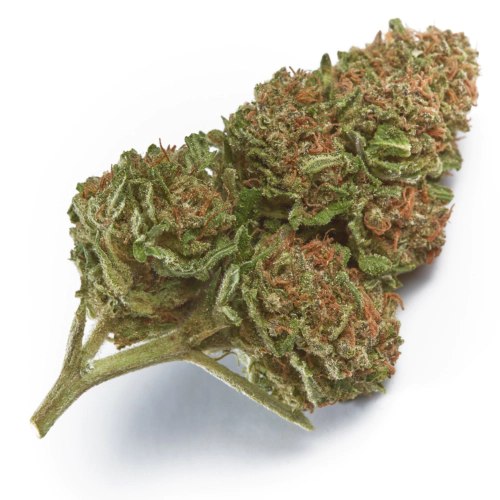
THC 17.5 - 20.5%
CBD 0.46 - 0.84%
Effect Happy
Flavor Sweet
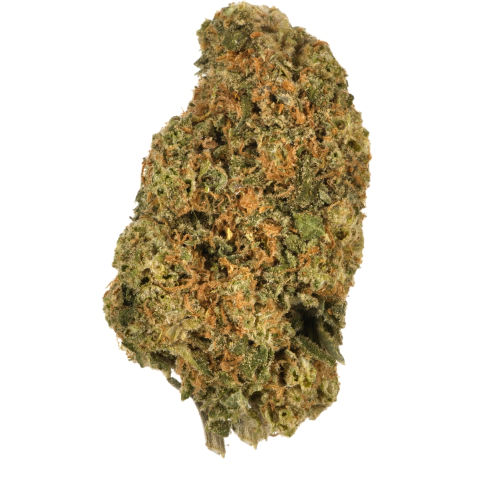
THC 19.6 - 22.4%
CBD 0.44 - 0.81%
Effect Happy
Flavor Citrus
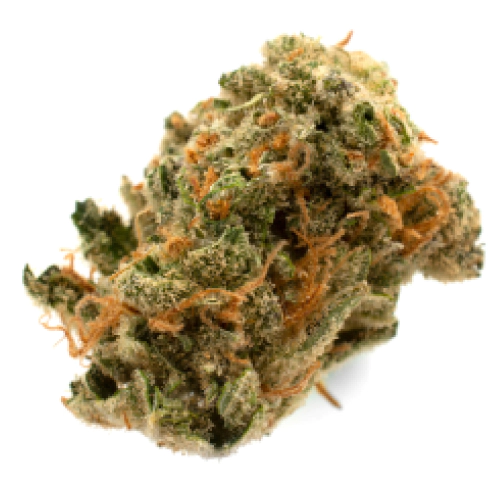
THC 18.8 - 20.8%
CBD 0.35 - 0.59%
Effect Happy
Flavor Coffee
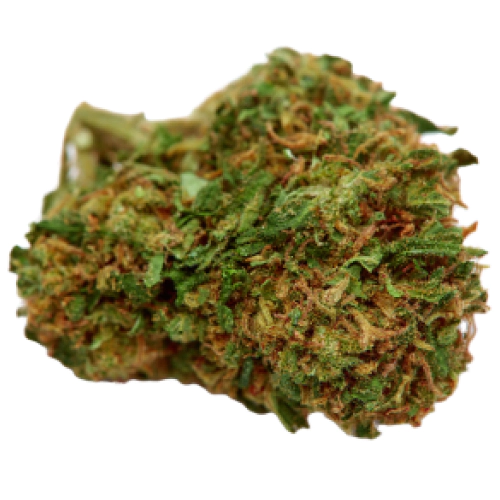
THC 23.33 - 25.33%
CBD 1.38 - 1.68%
Effect Happy
Flavor Lemon
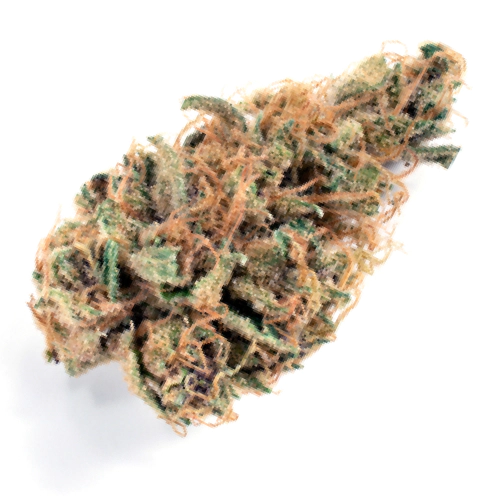
THC 18.67 - 22.33%
CBD 0.38 - 0.63%
Effect Euphoric
Flavor Berry
THC 7.5 - 10%
CBD 0.01 - 0.12%
Effect Happy
Flavor Pine
THC 16.67 - 20.67%
CBD 0.28 - 0.59%
Effect Euphoric
Flavor Spicyherbal
THC 9.5 - 11.5%
CBD 0.02 - 0.46%
Effect Talkative
Flavor Pineapple
THC 6.5 - 10%
CBD 10.2 - 10.94%
Effect Relaxed
Flavor Sweet
THC 20.75 - 22.5%
CBD 0.26 - 0.55%
Effect Relaxed
Flavor Skunk
THC 18 - 27%
CBD 0.3 - 1.38%
Effect Happy
Flavor Lemon
THC 20 - 25%
CBD 0.42 - 0.91%
Effect Concentrated
Flavor Ammonia
THC 16 - 25%
CBD 0.43 - 0.6%
Effect Energetic
Flavor Grapefruit
THC 18 - 22%
CBD 0.7 - 0.94%
Effect Tingly
Flavor Spicyherbal
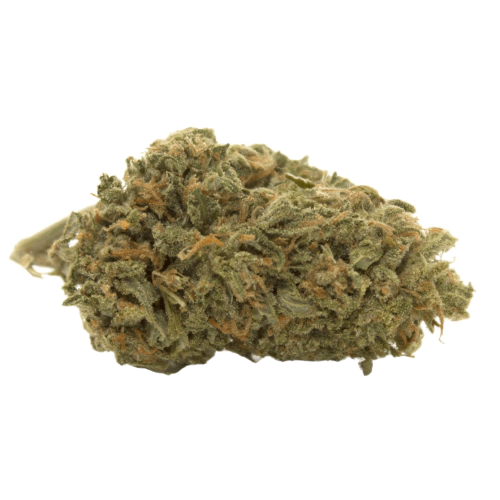
THC 18.75 - 22.5%
CBD 0.34 - 0.72%
Effect Tingly
Flavor Nutty
Be the first and share your opinion
Write a Review